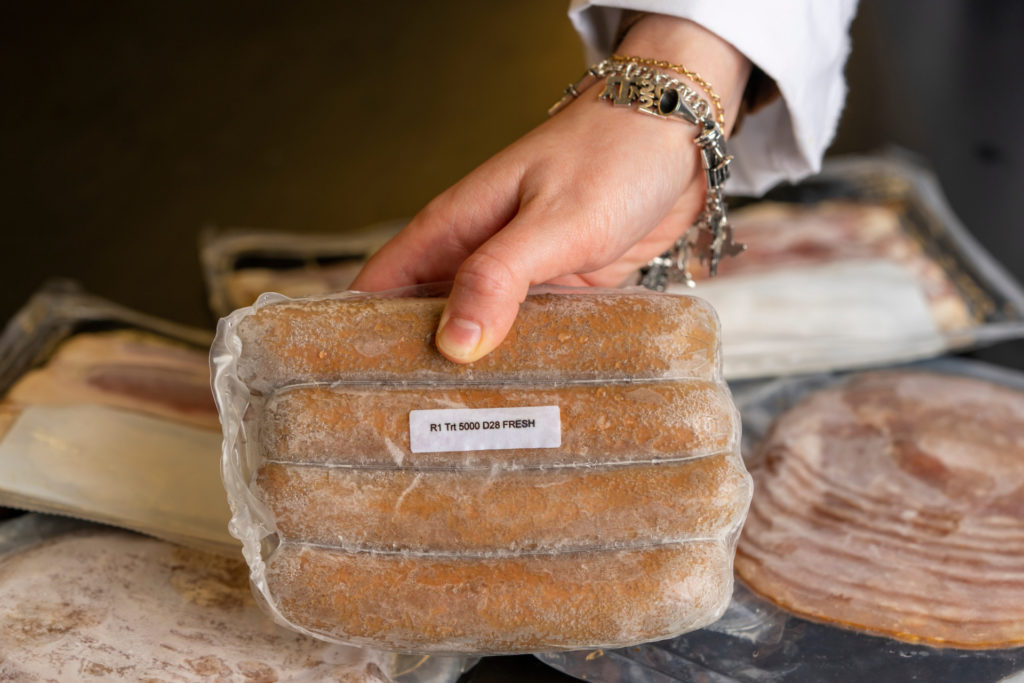Without adding nitrates: New process could substitute amino acid to cure jerky, bacon and other meats

Imagine your favorite cured meat like beef jerky, pepperoni or bacon without any added sodium nitrite from any source currently necessary for color and shelf life. A meat scientist at Texas A&M University is doing exactly that.
Associate Professor Wes Osburn in the College of Agriculture and Life Sciences has set out to find an innovative method to generate the nitric oxide and residual nitrite needed to cure meat and poultry products, but without the addition of natural or synthetic nitrite sources.
Conventional curing of most processed meat products involves adding sodium nitrite to meat to preserve it and reduce the potential growth of bacteria like Clostridium botulinum or perfringens during cooking and chilling.
Osburn has been researching the idea of a novel amino acid alternative curing system for meat for many years. In 2022, he received a $500,000 U.S. Department of Agriculture–Agriculture and Food Research Initiative grant to determine the feasibility of adding amino acids to activate the nitric oxide synthase system.
Joining him in the research are Department of Animal Science faculty members Rhonda Miller, professor; Guoyao Wu, University Distinguished Professor, University Faculty Fellow and Texas A&M AgriLife Research Faculty Fellow; Sapna Chitlapilly Dass, assistant professor; and Chris Kerth, associate professor, with colleague Ranjith Ramanathan, Oklahoma State University.
While curing meat with synthetic sodium nitrite is safe and efficient, the process has long been associated with cancer concerns. In response to these concerns, meat processors have developed “uncured” meat products that contain “no added nitrates or nitrites except those naturally occurring.”
This alternative curing system uses vegetable powder derived from celery as a natural source of nitrite to cure meat products. But these products may result in a detectable vegetable taste to the meat and a less favorable cured meat, or pink color, Osburn said.
Knowing that nitrites and nitrates occur naturally in humans and in some foods, Osburn believes it is possible to add an amino acid, L-arginine, to the meat that activates the nitric oxide synthase, NOS, enzyme contained in it. The NOS enzyme converts L-arginine to nitric oxide, NO, and another amino acid, L-citrulline.
The nitric oxide molecule creates the characteristic cured pink color associated with cured meats. Also, two nitric oxide molecules can combine to form nitrite, which serves as an antioxidant and antimicrobial to enhance product shelf life and safety.
“It could be that this approach is actually a ‘natural curing process’ by adding an amino acid to an enzyme whose primary function is to generate nitric oxide,” Osburn said. “I’m not adding any nitrates or nitrites.”

